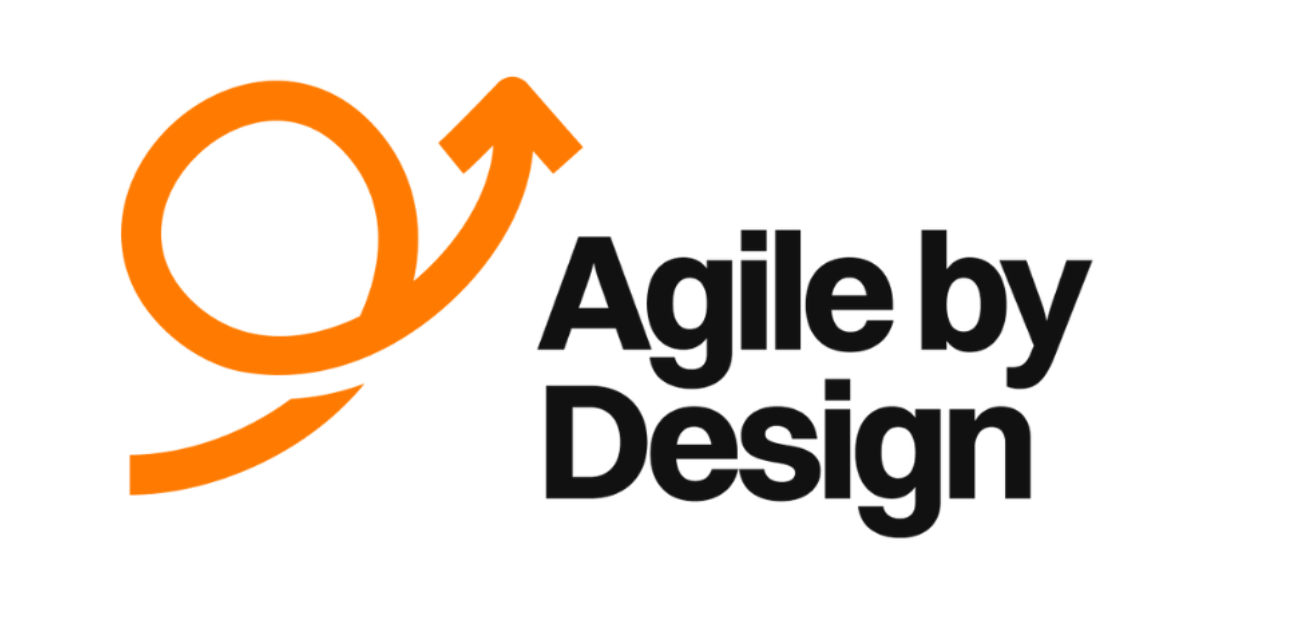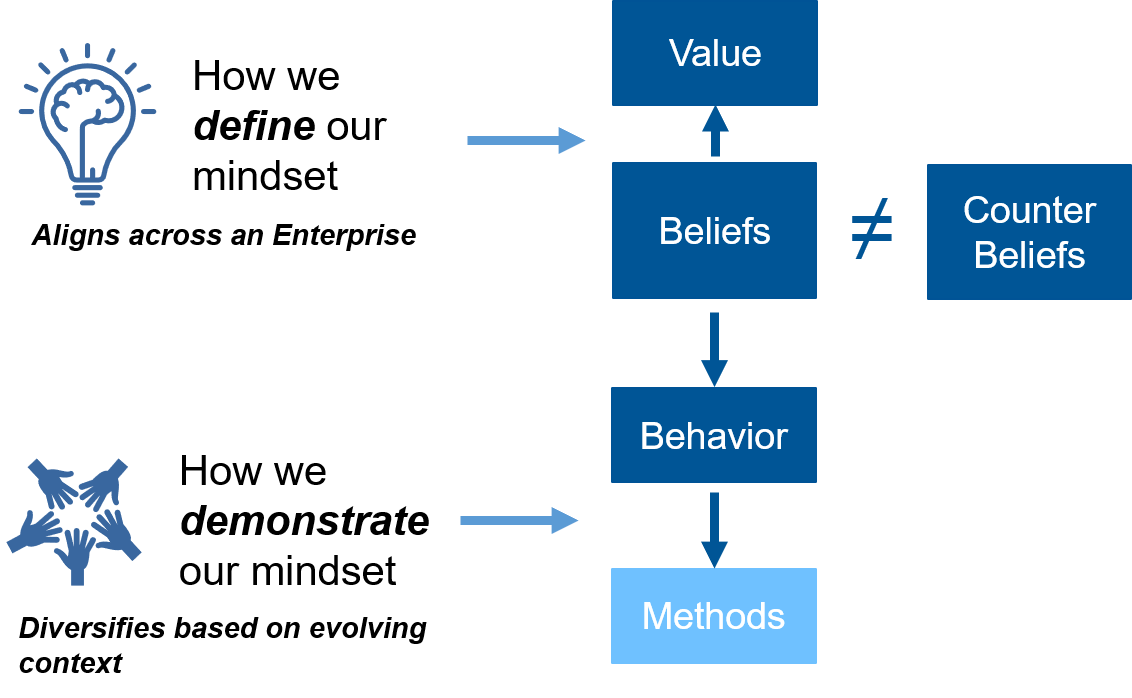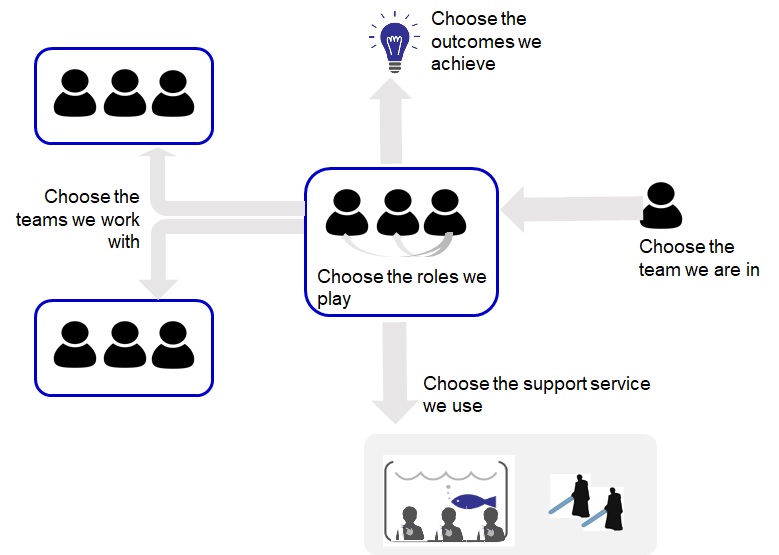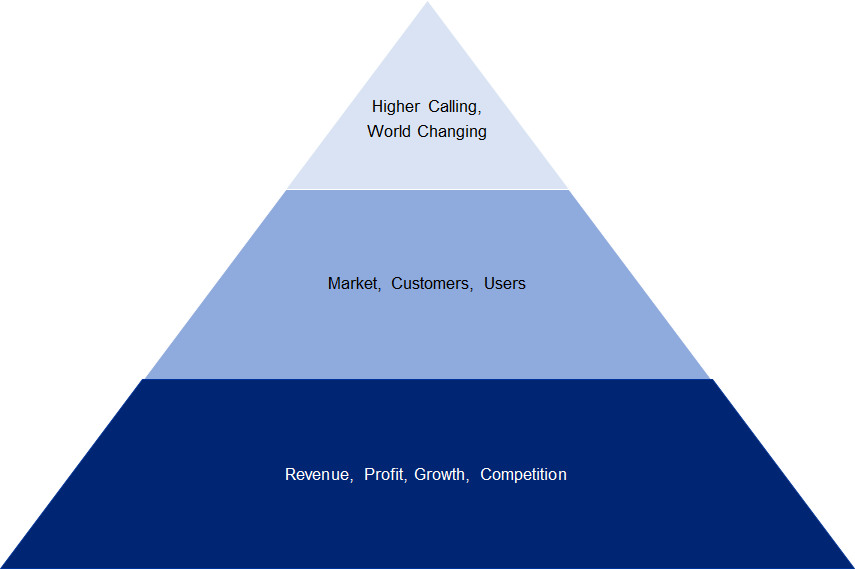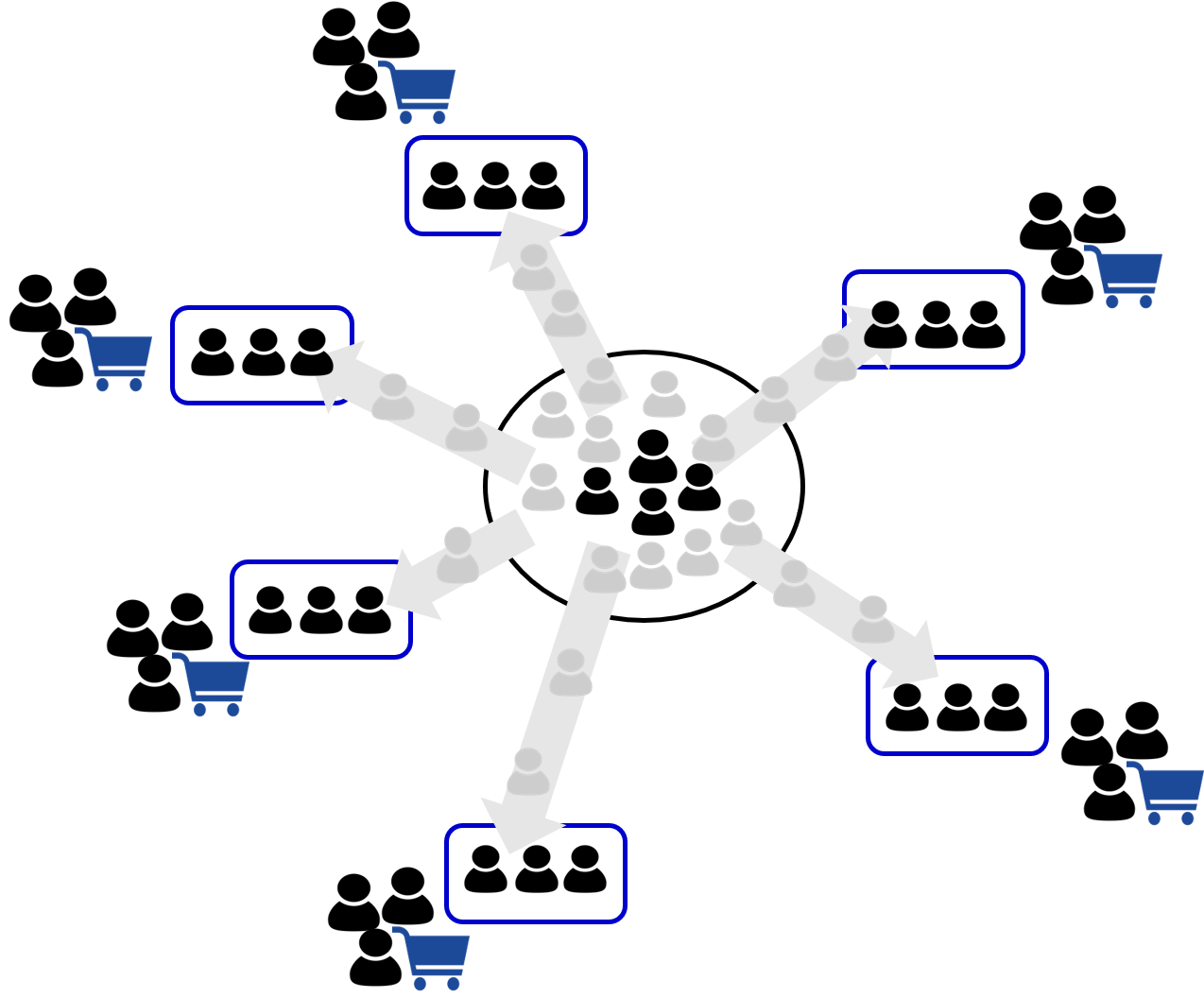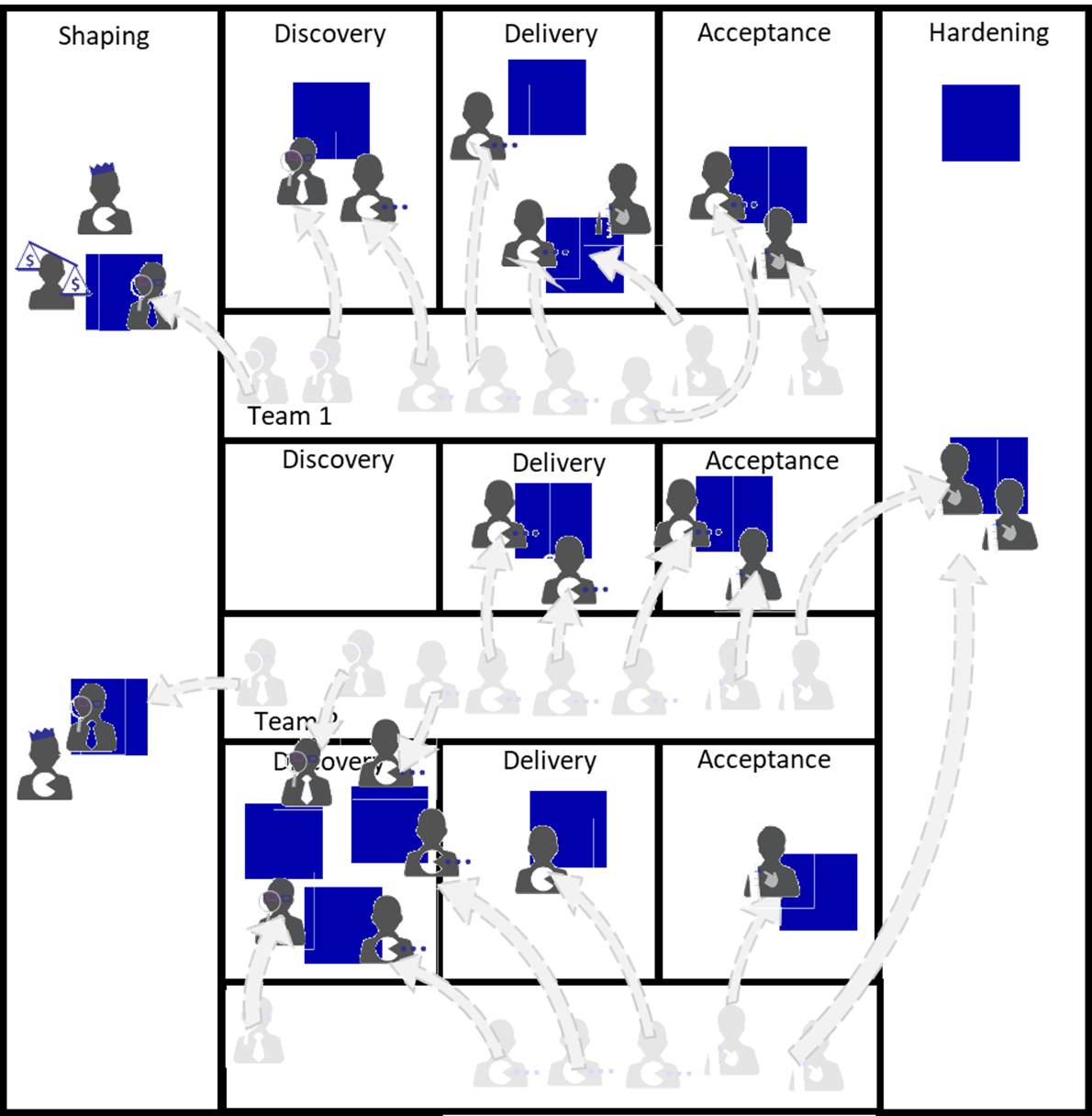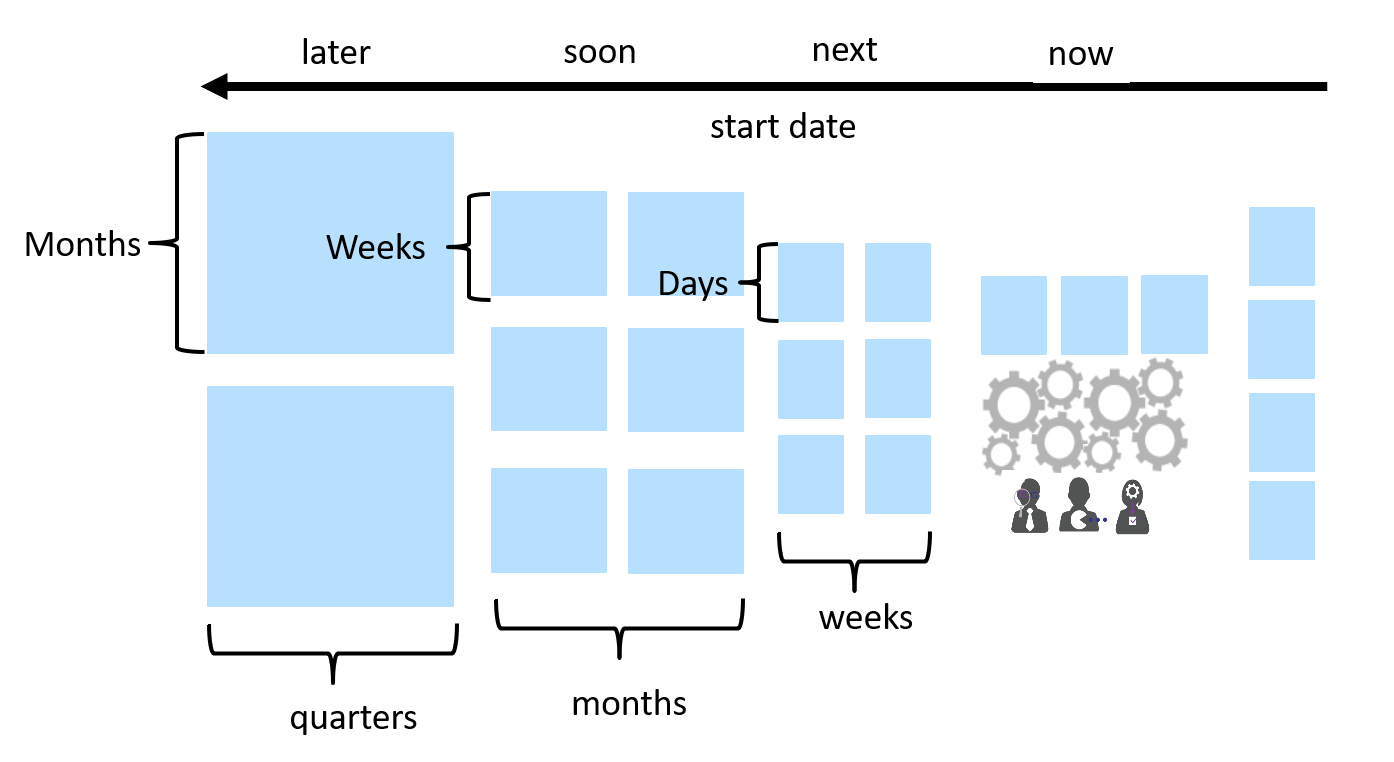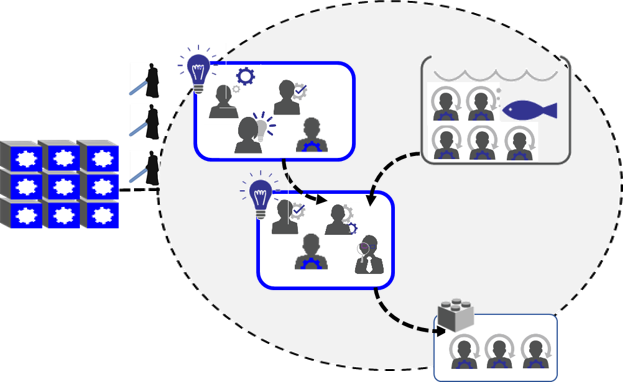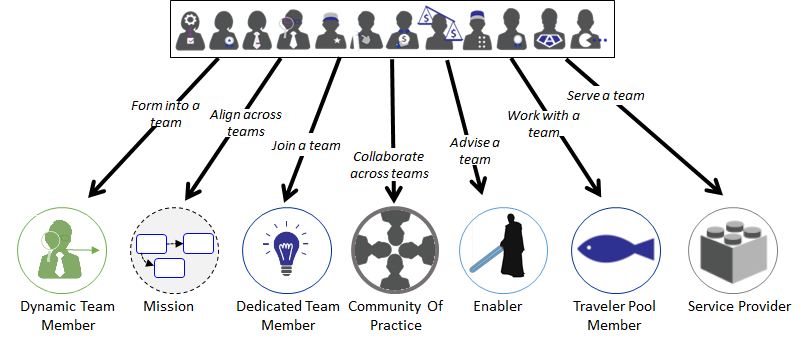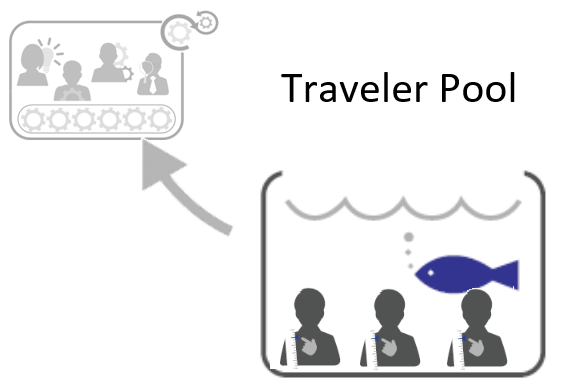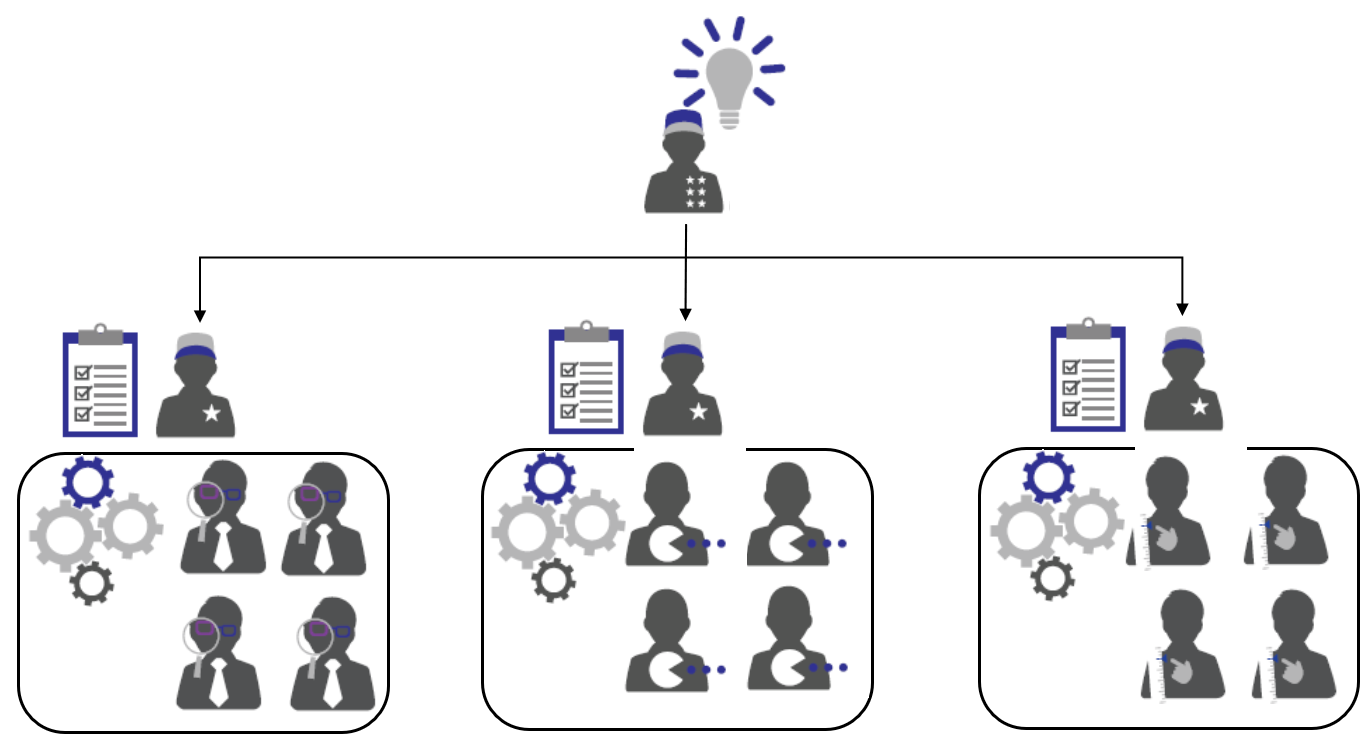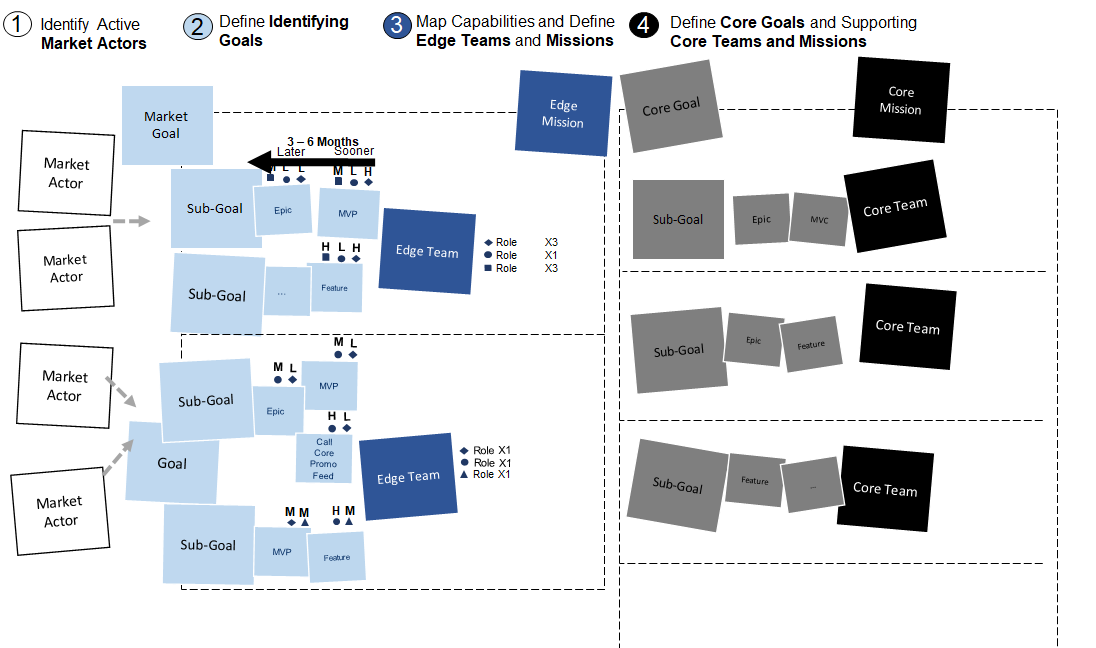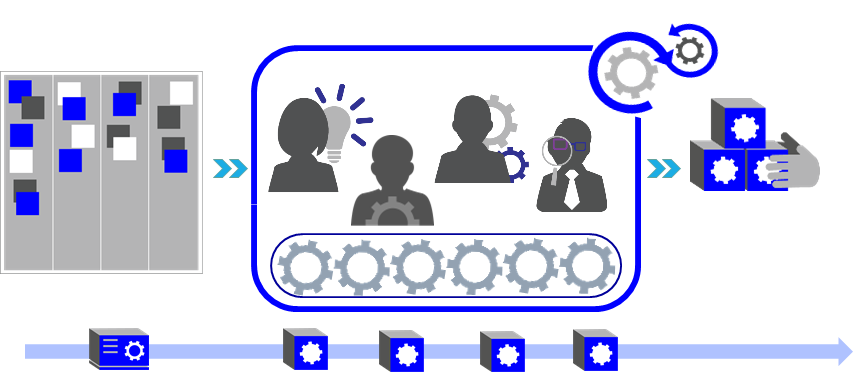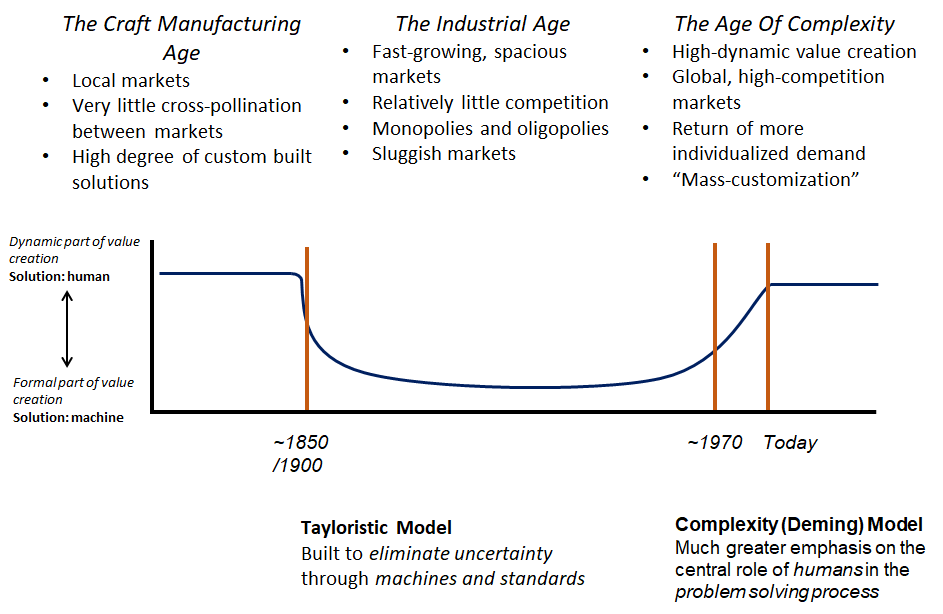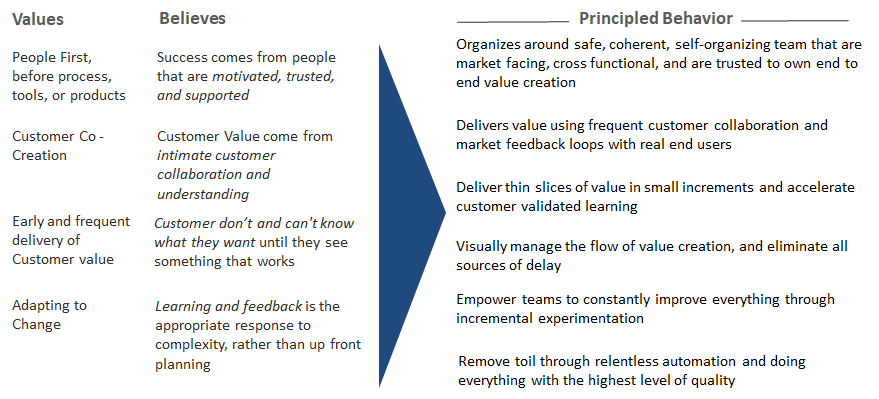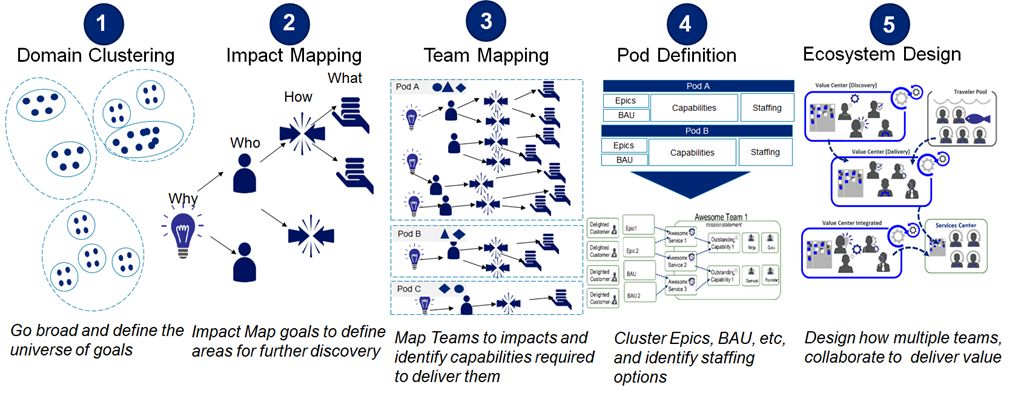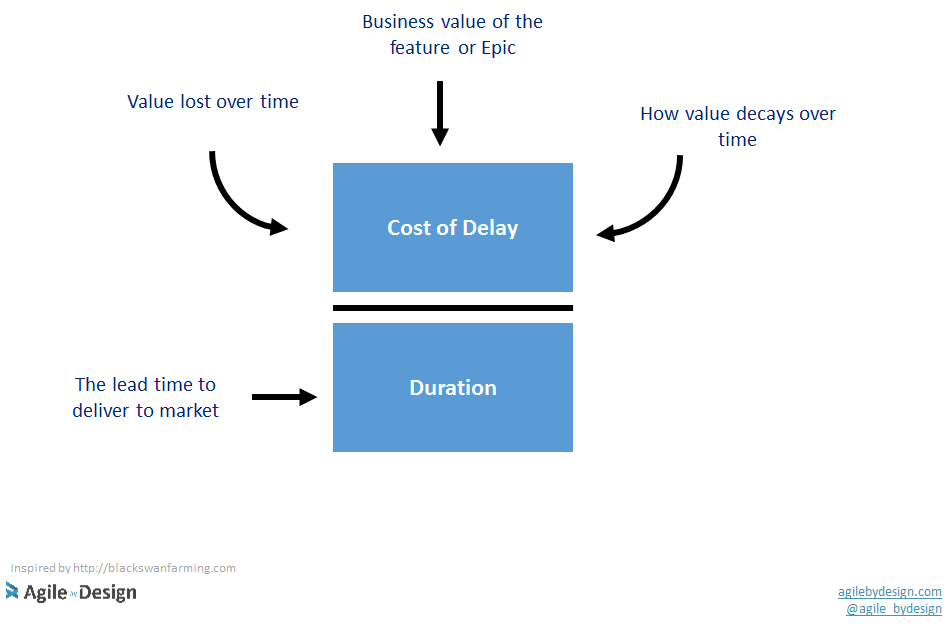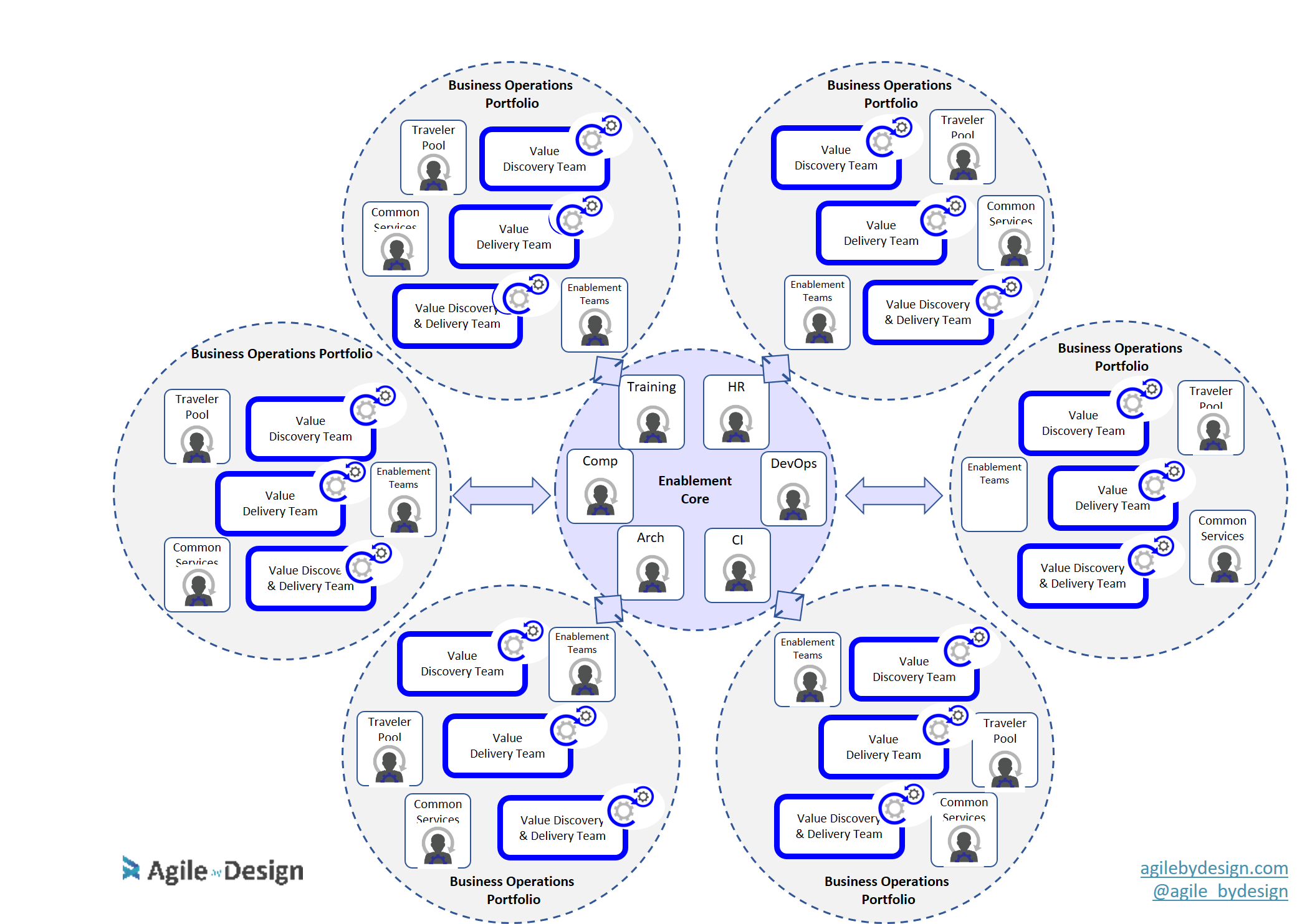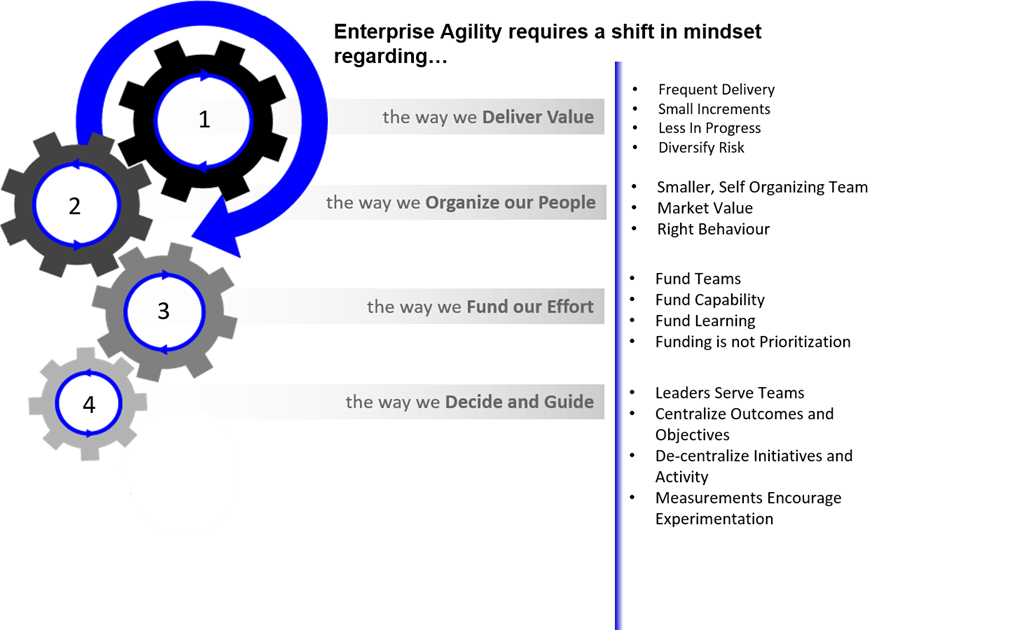Over the past few months I have been learning from what I will call "agile adjacent" communities . I have been reflecting on my own experiences. As a result I have been re-thinking the important agile organizing principles. I have been thinking about what principles will help us demonstrably improve organizational agility. The previous set of agile organizing principles, were to mechanical, and they were to wordy. They were to focused on how to organize, not why to organize. Here is hoping my next set of principles improve all of this. I hope these new principles that place a stronger emphasis on values, and are bit more inspiring.
Ok, here goes....
Agile Organizing Principles
- Organize For Purpose
- Organize through Choice
- Organize Around Flow of Value
- Organize Within Context
Organize For Purpose
I have been reading great material by Corperate Rebels as of late. It has caused me to take serious second look at the many Agile transformations I have been a part of. As a result, a common reflection I have made is that when people are organized around a strong purpose, then motivation, autonomy, self -organization, etc all become that much easier.
My initial approach was to focus this principle on the need for cross-functionality. Cross functionality is an important organizing principle. However, a cross functional team not organized around a strong purpose is still a team not organized for success. A team organized around a strong purpose will strive to be as cross functional as it needs to be.

An organization that is structured around purpose can avoid the seductive trap of fetishizing performance and productivity, and can instead observe the only thing that really matters when evaluating our organization, achieving an outcome. Plan for my book to be updated to highlight how to being this agile organizing principle to bear, and the choices we can make to foster, or inhibit, organizing for purpose.
Organize Through Choice
This is a huge agile organizing principle. I have, over the course of the last year, been heavily influence by work coming from the BetaCodex network. I have been trying to wrestle with concepts from both Open Space Beta, as well as Organizing For Complexity, with a strong focus on adapting Niels Pflaeging's conceptual organizational model.
But something has been missing in my narrative, something that crystallized during a session at yesterday's International Beta Meetup. The session facilitator, Alexander Krause raised a very insightful point. Most agile transformations start on the wrong foot. they begin with an act of command and control. We start by pushing people into a team. We tell them what to work on. We push an agile coach on them who tells them to do agile, or likely scrum. Then we wonder why they are not self organizing. We have given them accountability without giving them responsibility, responsibility to choose.
One of the most powerful concepts coming out the BetaCodex community is the idea that real change can only happen through invitation. We can never motivate others to change. We can only improve the invitation, or alter the environment. Motivation always comes from the person accepting the invitation.
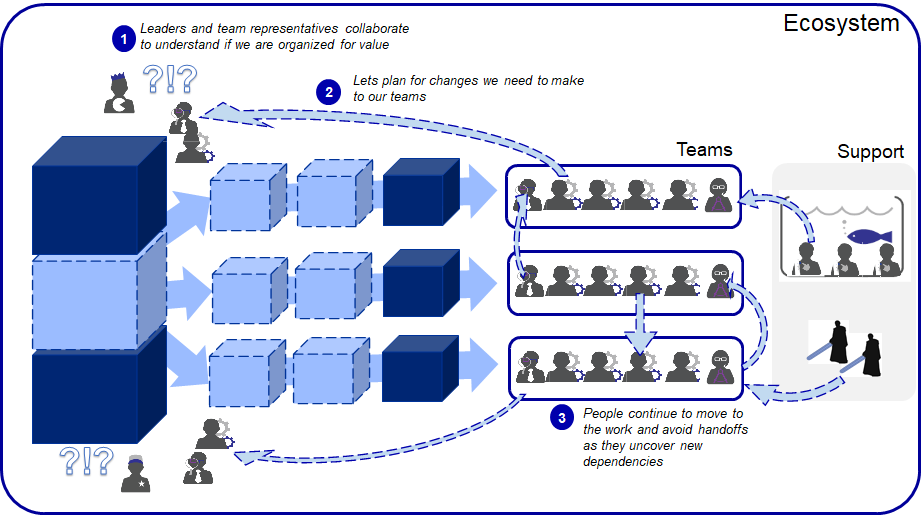
The concept of choice is an extremely powerful agile organizing Principles. While I refer to choice in various places in the current draft of my book, choice is going to become front and center as I continue to make updates. I want help others design organizing structure that maximize the amount of choice people can have. I have already written at length at how we can scale agile behavior to enable self-forming teams. I'll extend these concepts to to show we can use the power of invitation to maximize choice of team, choice of purpose, and choice of who to work with in the rest of the organization.
Organize Around Flow of Value
In a complex world of any scale, understanding who to team up with, when to team up, and on what, can be an extremely daunting task. Classic agile teams, with a stable and often static roster of people are a popular answer. But traditional agile teams is at best a partial fit with the realities of many large enterprises of today. A world of constant uncertainty demands that we look for different ways to flex the way we are organized. We need to enable collaboration across official organizational structure, including team structure. Kanban is an awesome way to achieve this flexibility. The method provides the transparency required to enable self- organization at larger scale. I will also spend more effort connecting how various team collaboration patterns can be used to maximize flow of value.
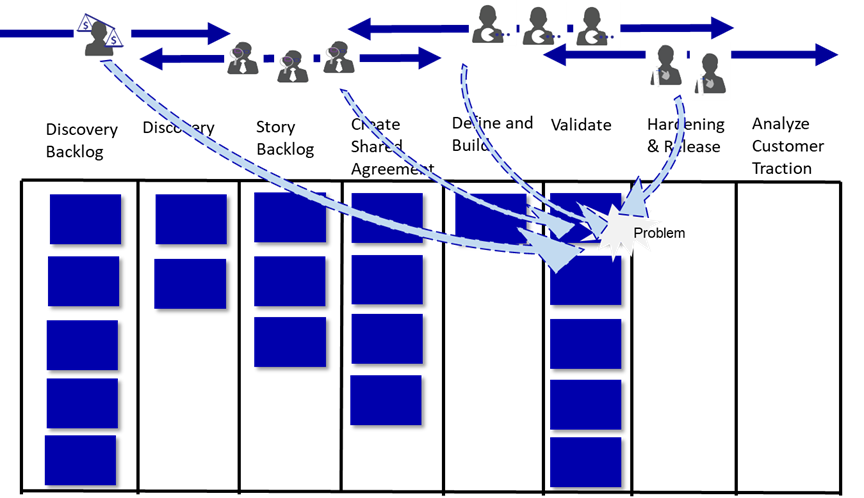
Organize Within Context
This principle still needs work. There is a lot of power in thinking about organizing around domains, bounded contexts, and concepts taken from the world of domain driven design. There is also power in looking at organizing structures larger than the context of a single team. This principles still feels weaker than the rest, so I will likely revisit this one as I get my thoughts and experience down on paper.

I am excited about this new direction
These changes in organizing principles seem simple, but profound. I feel energized about this new direction and am excited to take my book into this new direction. Stay tuned for updates !








